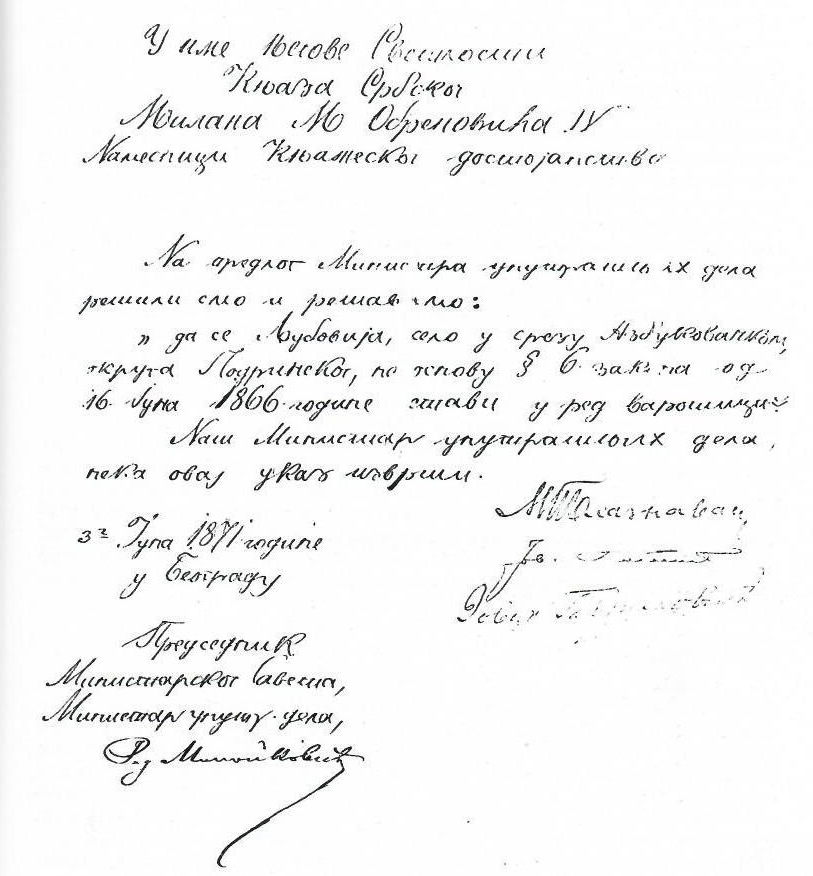Ljubovija is a settlement in Podrinje, at the confluence of the river Ljuboviđa and the Drina. It is surrounded by
the Kik, Nemić and Kršino brdo hills.
People from Azbukovica are called Krivotorbići, because of the colorful bags they slung over their shoulders when they go
to town. No matter where you were
the citizens of Ljubovija will proudly say that they are from Podrinje, from Azbukovica and called Krivotorbići.
Ljubovija is said to be one of the most beautiful places in Serbia. It is located on the banks of the Drina river, immersed in the clear
air, surrounded by forests and the most beautiful mountains in this part of the world. Anyone who comes to Ljubovija
or the surrounding area should not have it
fear that "he will see everything". First, because the nature and attractions that this area offers are inexhaustible, and
secondly, if anyone
get tired of visiting incredible natural beauties, the locals prepare various attractive ones every year
manifestations, which are unique in many ways, and above all fun and guarantee a good time.
The highest peak, the "roof of Azbukovica", is the mountain Bobija, whose peak, Tornička Bobija, is 1,272 meters high. It
cuts through Azbukovica
several lush rivers that flow into the Drina, the most famous of which are Trešnjica and Ljuboviđa, which are rich in trout.
The municipality has close to 15,000 inhabitants, and Ljubovija, as the center of the municipality, has about 4,000
inhabitants. It got its name from the beg
Ljubović, who, at a time of social and economic growth, built a tower above a grain field next to the Drina Drabić.
Many residents of the area of the municipality of Ljubovija, called Azbukovica, which has an area of 356 square
kilometers, do not know that
it was inhabited in prehistoric times, as evidenced by finds from grave mounds in the village of Lonjin and the
town settlement
Rujevac. During the Roman Empire, Azbukovica belonged to the province of Dalmatia, it connected Domavia and
Singidunum with roads.
Throughout the Middle Ages, Azbukovica was a part of Byzantium and the Serbian states, and the lead mines in Crnča
worked all the time.
and Lipnik. In official documents, the oldest so far known memorial is the one from Lipnik from 1319. At
river Ljuboviđa in the village of Gornja Ljuboviđa, a medieval bridge that was on the caravan route has been preserved
towards Valjevo and Belgrade, popularly known as Latin bridge, in the village of Gornja Trešnjica are the remains of a medieval
Big and Small cities.
The Turks came to this area immediately after the fall of Smederevo, in 1459-1460. Due to the importance of the mine in
Crnča, this area was
the imperial has, which was named after the largest village, the Bukovica has, which is probably where the name Azbukovica
came from. Turks
will be established, strengthened and settled in the medieval fortress Soko grad, which will be impregnable until 1862
when it was demolished.
In 1860, Ljubovija became a county seat, and in 1871, by decree of Milan Obrenović, a small town. It was a small town at that
time practically wiped out by the sudden overflow of the Drina in 1896. Nova Ljubovija was built on a hill called Jabučje
with a heavy
the task of building everything from scratch.
Since the plots of land in Ljubovija belonged to two local butchers and some peasants from the surrounding area in
those years, the district
the chief considered that this operation could be carried out in the following way:
1. That the first twenty lots, marked with those ordinal numbers and in the settlement plan, and foreseen
for shops, for the sum of 500 ducats.
2. That outside of that center, in a place that is not intended for construction, a space for the meeting place of the
Azbukovica
battalion of the national army. This land was to be bought with the funds collected through taxes.

"In the name of his Eminence the Prince of Serbia
Milan M. Obrenović IV
Governors of the Princely Dignity,
At the proposal of the Minister of Internal Affairs, we resolved and are resolving:
Ljubovija, a village in the Azbukovica county, Podrinjsko district, based on
paragraph 6 of the Law of June 16, 1866, put it in the order of towns."
June 3, 1871
Milivoje Blaznavac
In Belgrade
Jovan Ristić
Jovan Gavrilović
